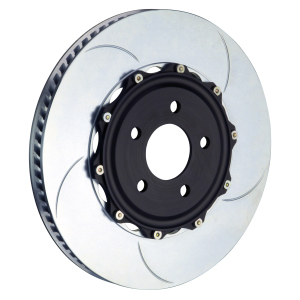A brake disc’s face type (slot / groove pattern) is one of those changes and can influence many braking characteristics.
Some of them are:
Initial response (bite)
Control and modulation
Release
Pad wear
Disc wear.
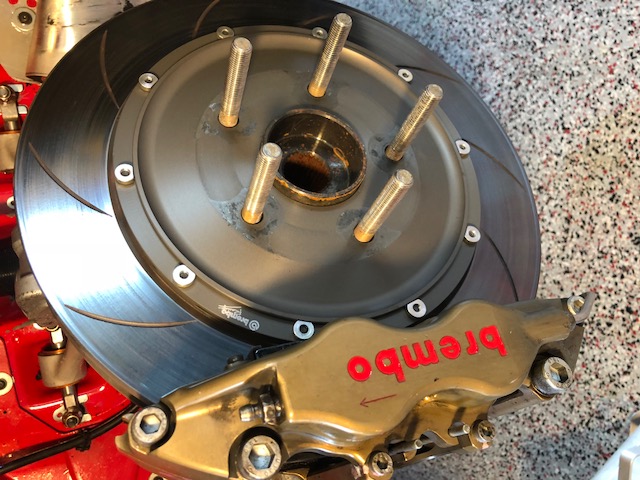
There are also many variables which are considered when engineering a brake disc face type. Changing some of these variables can drastically influence the overall performance of the brake disc. Some (of the many) variables which are taken into consideration for brake disc slot design are:
Slot depth
Slot angle
Length of slot
Number of slots
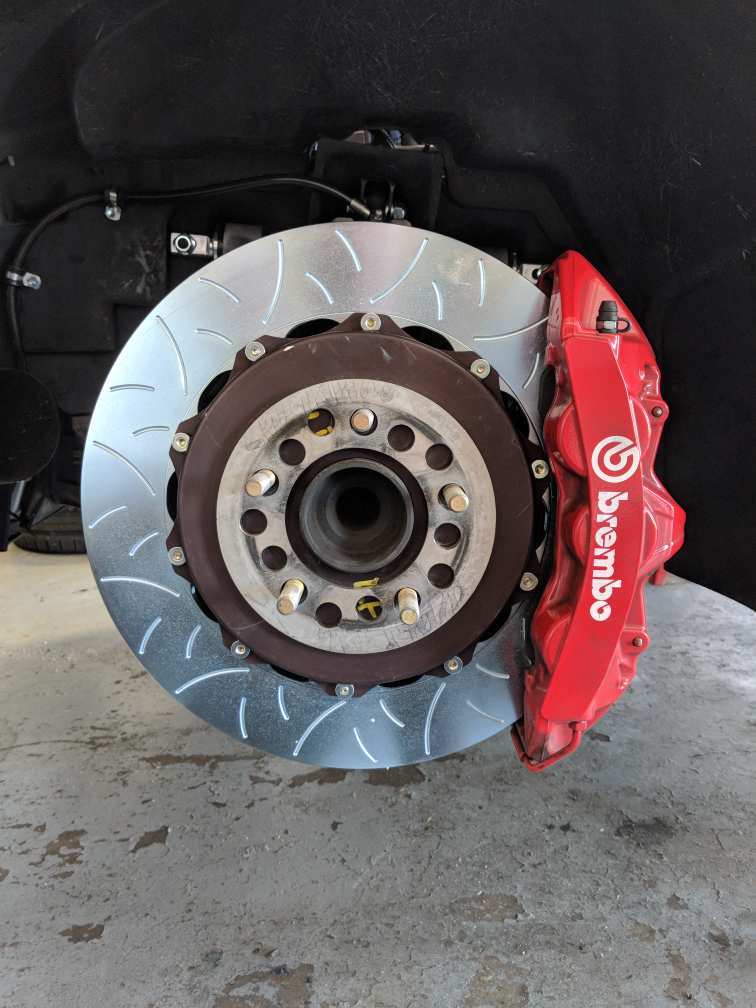
Drilled: drilled brake discs are suitable for a wide range of applications, operating temperatures and driving environments (especially wet weather).
Benefit: offers the highest initial response of all the available disc face types while continuously refreshing the braking surface and being also typically a bit lighter.
Drawback: Drilled discs are generally more prone to heat checking and thermal cracking if used consistently at extremely high temperatures. This however, really depends on the track, driver, and chassis setup.
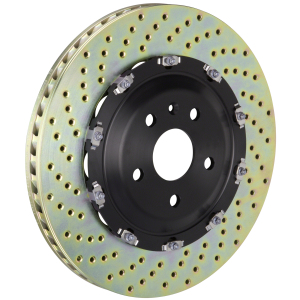
Type-1: Brembo “8 straight – slot” face type with an emphasis on stable brake feel and improve resilience against thermal cracking.
Benefit: stable braking feel at all temperatures, low disc wear, and continuously refreshing the braking surface for optimum performance.
Drawback: The Type-1 standard disc face has the lowest “initial response” or “bite” compared to Brembo Drilled, Type-3 or Type-5 discs.

Type-3 (Aggressive Face Type): motorsport developed face type with an emphasis on high initial response while maintaining a smooth pedal release.
Benefit: highest overall braking confidence, control, and allows driver to spend less time on the brake pedal. When chasing the fastest lap time, less time on the brake pedal typically leads to a quicker lap time.
Drawback: Any disc with an aggressive face type like the Type-3 will have a higher chance to mechanically abrade the pad and disc surface leading to quicker or uneven pad wear. However, this really depends on variables such as car setup or track layout
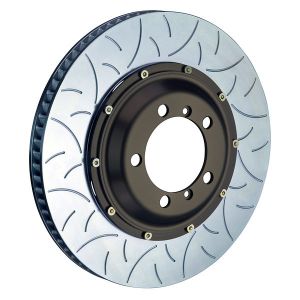
Type-5 (Endurance Face Type): motorsport developed face type with marginally less initial response compared to the Type-3 face type. The Brembo Racing Type-5 face type was also designed to have lower pad and disc wear for certain long distance endurance races (mostly 10, 12 and 24 hour races).
Benefit: braking modulation and control similar to Type-3, while offering lower overall pad and disc wear on the track.
Drawback: While the most well balanced of all Brembo face types, Type-5 discs generally do not have as high of an initial response compared to the Type-3.
